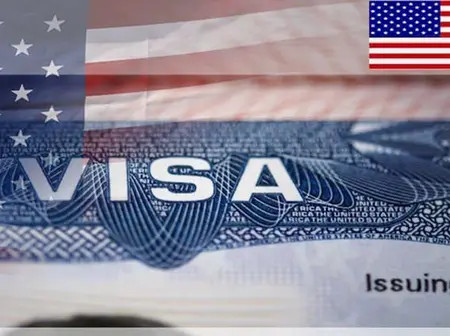New Delhi — For decades, the United States has been the top destination for India’s brightest minds. It was a land where talent, hard work, and innovation promised a pathway to global success. But a recent shift in U.S. immigration policy, particularly the dramatic increase in the cost of the H-1B skilled worker visa to $100,000, is shaking that dream at its core. This H-1B visa shake-up crushes the hopes of many aspiring individuals.
At the Indian Institute of Technology (IIT), one of the country’s most prestigious academic institutions, this change has sent shockwaves through the student body. Known for producing world-class engineers, scientists, and entrepreneurs, IIT campuses have traditionally been fertile recruiting grounds. Both Indian and American firms are eager to secure top talent in fast-evolving fields like artificial intelligence, robotics, and clean energy. These firms have been affected.
“About 20 students are graduating from my department, and nearly 10 to 15 have a postdoctoral offer from the U.S.,” said Ajaykumar Udayraj Yadav, a doctoral candidate in materials science and engineering at IIT Delhi. “But the way they’re seeing the situation develop in the U.S., these students are unwilling to take them up.”
Yadav, who volunteers at the university’s Office of Career Services, has seen firsthand the anxiety rippling through the graduating class. For students who once saw the United States as the obvious next step in their academic or professional journeys, the future now looks uncertain — and expensive.
The Trump administration’s announcement of a $100,000 application fee for the H-1B visa has been met with outrage and disbelief across India’s academic and tech communities. Once viewed as a bridge to opportunity, the H-1B visa is now being perceived as a financial and bureaucratic barrier. It is effectively a shake-up that crushes existing hopefuls.
“This is not just a price tag; it’s a deterrent,” said a senior faculty member at IIT Madras, who requested anonymity. “Even those students with offers from top-tier U.S. institutions or companies are questioning whether the investment is worth the risk.”
The H-1B program, designed to allow U.S. companies to employ foreign workers in specialized fields, has long been dominated by Indian nationals. This is particularly true for those trained in STEM disciplines. Last year, India surpassed China as the largest source of international students in the U.S. Many of these students transition to H-1B roles after graduation.
But with policy decisions increasingly reflecting protectionist rhetoric, that pipeline now appears under threat.
The fallout is already visible. American firms that once had their pick of India’s top engineering talent are seeing reluctance among candidates. Meanwhile, countries like Canada, Germany, and Australia — which have rolled out more immigrant-friendly policies, are stepping in to fill the vacuum.
“There’s a shift happening,” said a placement coordinator at IIT Bombay. “Students are recalibrating their ambitions. They’re looking at Europe, at Asia — even staying in India. The U.S. no longer feels like the obvious choice after the visa shake-up crushed many dreams.”
Indian companies, too, are responding. Domestic giants in tech and research are ramping up recruitment at IIT campuses, eager to retain talent that might otherwise have been lost to Silicon Valley.
For the U.S., the consequences may extend beyond immediate labor shortages. Experts warn that alienating top-tier international talent could set back America’s leadership in emerging technologies. This is due to such visa shake-ups.
“Cutting off access to foreign researchers and engineers isn’t just about visas — it’s about the future of innovation,” said Dr. Radhika Menon, a technology policy analyst. “The U.S. has always benefited from being a magnet for the world’s best minds. That magnet is losing its pull.”
For students like Yadav, the decision is personal — and painful. He speaks with friends who once dreamed of studying or working at MIT, Stanford, or Google. They now wonder whether those paths are still viable after seeing how the H-1B visa shake-up crushes them emotionally.
Yet, even as many turn away from the U.S., the ambition that defines IIT graduates remains intact. Whether they take their talents to Bangalore, Berlin, or Toronto, they will continue shaping the future of technology.
The question is no longer whether the American Dream is alive for India’s top students — but whether it’s still worth the price.

Leave a Reply